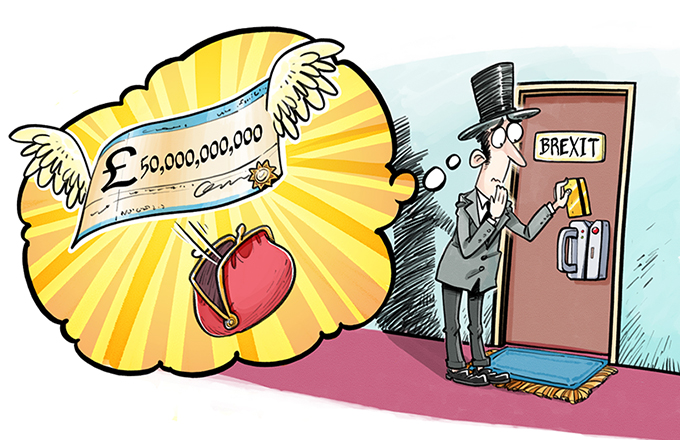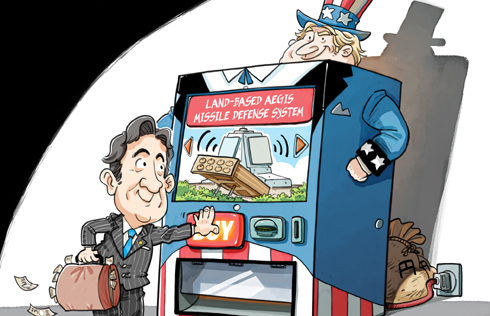Right to development is fundamental
Special Action Plans
The Chinese government formulates special action plans in the fields of economy, culture, society, and environment to ensure people's right to development. It has implemented a wide array of action plans in areas such as poverty alleviation, the Internet, innovation and entrepreneurship, science and technology, trade, and regional development. Specifically, these plans have been designed to promote entrepreneurship and innovation among farmers, to send agricultural specialists to rural areas to develop agriculture, to develop rural and agricultural resources in support of rural migrant workers who return to their home villages to start businesses, to improve people's lives by developing high-tech industries in selected counties, to transform the growth model of the western areas through science and technology, and to revitalize the old industrial bases in the Northeast through science and technology. The state has effectively implemented a series of action plans regarding educational development, health improvement, awards for high-caliber professionals, and the cultural industry, such as the action plans to revitalize education in the 21st century, to enhance teachers' status in the stage of compulsory education in rural areas, to promote special education, to help girls who have dropped out of school to return to campus, and to support the more developed cities in the eastern areas to train professionals for the western areas. China has implemented a series of action plans regarding employment, social security, food and medical care, disability prevention, and health and fitness, such as the Spring Breeze Action Plan to promote employment, and other plans to realize full coverage of social security, to eliminate malaria, to prevent and control nosocomial infection, to carry out rehabilitation programs for children with impairments and disabilities, to reduce the number of newborns with defects and disabilities, to prevent incidences of disability, and to improve the nutritional status and fitness of the Chinese.
The state has issued action plans on pollution prevention and control, energy conservation, and biodiversity, such as action plans to prevent and control water pollution, to reduce high-risk pollutants, to utilize coal in a clean and efficient manner, to upgrade and renovate coal power for energy saving and emissions reduction, to build obstacle-free cities or counties for the disabled, and to protect biodiversity.
China has also made special plans to ensure the right to development of ethnic minorities, women, children, the elderly, and the disabled. The plans include those on the development of ethnic minorities, of women, of children, of the elderly, and of the disabled persons, with clear goals and targeted policies for different groups to solve the problems hindering their development, ensuring that they can pursue self-development and enjoy the fruits of reform on an equal basis.
The Judicial Remedy Mechanism
China is making enhanced efforts to strengthen the judicial protection and remedy to ensure the people's right to development. It has built a judicial remedy mechanism in this regard to prevent and punish infringements of people's right to development.
The government is driving the reform of the judicial relief system to a deeper level to ensure the right to development of disadvantaged groups. The state provides judicial relief to victims of crimes or parties suffering from infringements of civil rights who cannot obtain effective compensation through litigation, and provides help to parties in certain types of cases who are in dire need of relief and are entitled to such relief. Eligible parties mainly receive relief money, and help in the forms of consultation and education. Judicial relief complements legal aid and litigation relief, and is linked with other forms of social relief and aid. The government is conducting research on opening first-aid fast track at hospitals for those injured in criminal cases, providing psychotherapy for victims with severe PTSD cases, and sending social workers to help immobilized victims, so as to further enhance judicial relief. In 2014 the state issued the "Opinions on Establishing and Improving the National Judicial Relief System (trial)," which was followed by a marked expansion in the scale and increases in the number of judicial relief cases. In 2014 and 2015, the central government and local governments allocated a total of RMB2.47 billion and RMB2.95 billion for judicial relief funds, benefiting over 80,000 parties concerned in 2014. In 2013-2015 people's courts at all levels reduced or exempted a total of RMB625 million for litigation parties, ensuring the right to litigation of the poor.
The government strives to strengthen the effectiveness of legal aid, and ensures the right of impoverished people to judicial relief. In 1994, China began to form a legal aid system, providing free consultation, agency, criminal defense, and other legal services to people in need. In 2003, the State Council issued the Regulations on Legal Aid to define the scale of legal aid, delegating the power to the people's governments of provinces, autonomous regions, and municipalities directly under the central government to supplement the issues to be covered by legal aid, and set the standards for receiving legal aid in light of the local conditions. Currently there are 23 provinces that have expanded the scope of issues covered by legal aid, and 19 provinces have adjusted the standards for receiving legal aid. The Criminal Procedural Law (revised in 2012) included suspects as recipients of legal aid, alongside defendants. Over the past five years, the number of legal aid cases has been growing by 11.4 percent annually, and women, children, the elderly, the disabled, and rural migrant workers have received timely and higher quality legal aid services. In May 2015, at its 12th meeting, the CPC Central Leading Group for Overall and Further Reforms reviewed and approved the "Opinions on Improving the Legal Aid System," with measures to further enlarge the coverage of legal aid for civil and administrative lawsuits, reduce the thresholds for receiving legal aid, and gradually make legal aid available to low-income groups to benefit people in need. The government strengthens judicial remedy to protect the right to development of disadvantaged groups. China has always attached importance to the judicial protection of the right to development and other basic human rights in criminal cases. The state punishes crimes targeted at women, children, the elderly, the disabled, and rural migrant workers, and strengthens the protection of special groups' rights to healthy physical and psychological development and their economic and social rights. The government strives to prevent or severely punish the abduction and trafficking of women and children, and such crimes have been effectively curbed. The state has issued the "Opinions on Punishing Sex Crimes Against Minors" and the "Opinions on Handling the Infringements of Minors' Rights and Interests by Guardians," so as to enhance the judicial protection of minors' rights and interests. The state has promulgated the "Opinions on Safeguarding the Legitimate Rights and Interests of Disabled Persons in Procuratorial Work," mandating severe punishment for crimes that infringe upon the rights and interests of disabled people in accordance with the law.
The government attaches importance to the role of arbitration, and protects the equal right to development of certain groups. By ending disputes through arbitration and punishing infringements according to law, China endeavors to strengthen procedure-based protection of the people's rights. By the end of 2015, 80 percent of township-and community-level employment and social security centers had set up organizations to mediate labor disputes, up by 14 percent from the 2014 figure. A total of 2,919 administrative divisions at or above county level (about 91 percent of the total) had arbitration offices for labor disputes, up by 208 percent compared with the figure of 946 at the end of the 11th Five-Year Plan period (2006-2010). In 2010-2015, China's mediation and arbitration organizations handled a total of 7.57 million cases, bringing 90 percent to a conclusion.



















